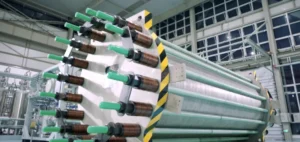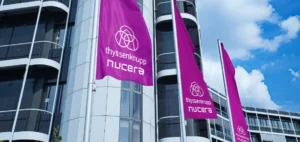The European Commission recently proposed a broader definition of “green” hydrogen by allowing the use of hydrogen produced from nuclear electricity under certain conditions. This decision was welcomed by France, which could now use the atom to achieve its “renewable” hydrogen objectives. However, Germany and Spain advocate a more restrictive definition, considering as “green” only hydrogen from renewable sources.
Criteria proposed by Brussels
The criteria proposed by Brussels are part of European legislation currently being negotiated that sets ambitious “renewable” hydrogen targets for industry by 2030. In general, hydrogen will be considered “green” if it is made with an electrolyzer directly connected to a “new” renewable electricity source, which encourages the deployment of new renewable energy.
Hydrogen will also be considered “green” if the electrolyzer is powered from an electrical grid where the share of renewable energy reached at least 90% in the previous year, without any additional renewable infrastructure requirements.
Finally, hydrogen will be considered “green” if the electricity grid used is largely decarbonized, with carbon emissions related to electricity production not exceeding 18 grams CO2 equivalent/megajoule, this criterion being considered valid for five years once reached.
France and Germany have different points of view
The European Commission’s decision was welcomed by France, which had long called for the inclusion of hydrogen produced from nuclear electricity in the criteria for “green” hydrogen. The French Minister of Energy Transition, Agnès Pannier-Runacher, has advocated for the use of decarbonized electricity from nuclear power to produce hydrogen. She also warned that imposing very high renewable hydrogen targets for industry without taking into account the share of hydrogen that can be produced from nuclear electricity would be “absurd and contrary to our European decarbonization goals.”
However, Germany and Spain have reaffirmed their opposition to the inclusion of “low-carbon” hydrogen, i.e. produced from nuclear electricity, in the text on renewable energy. A spokesman for the German government said that “hydrogen produced from nuclear energy is not green hydrogen (….). We will be involved in discussions with this position,” said a spokesman for the German government.






















